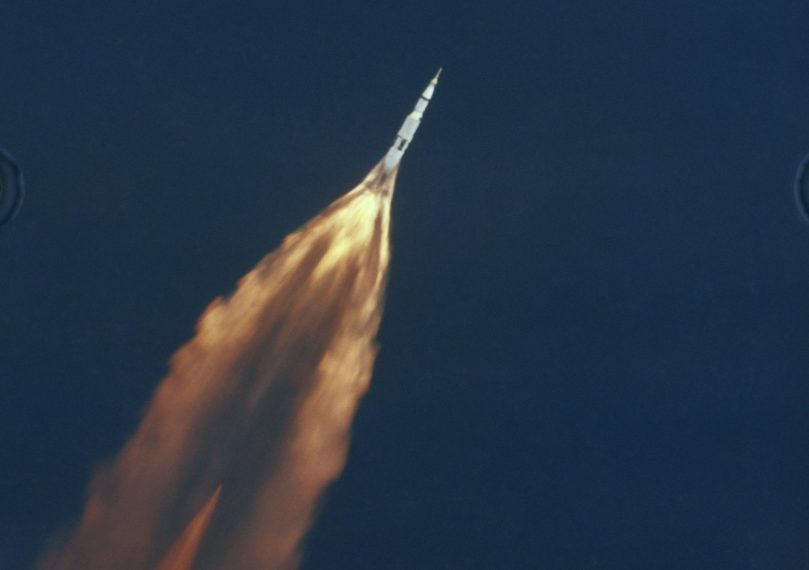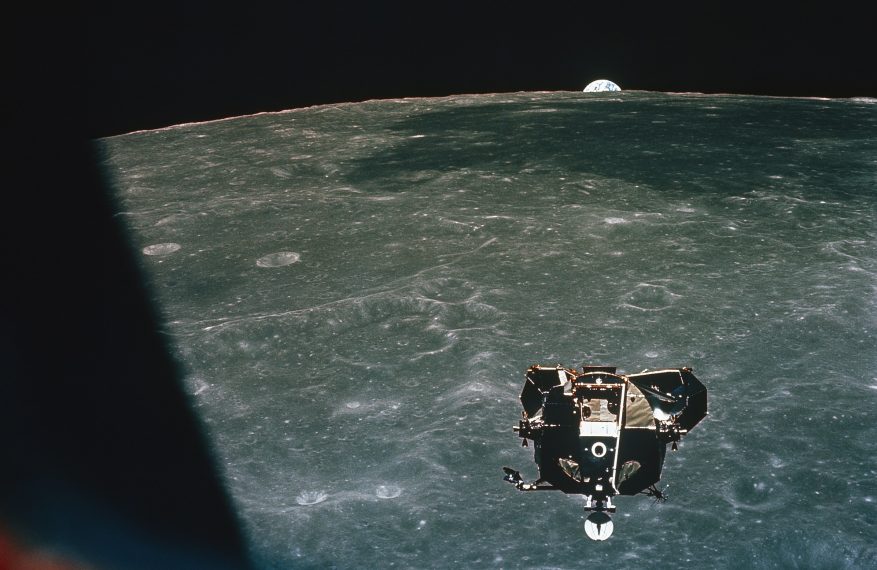National Geographic Launches the Golden Age of Space Over 4 Nights

In celebration of the 50th anniversary of the first manned lunar landing, National Geographic Channel will air four nights of special programming, starting on Sunday, July 7 at 9/8c with the two-hour documentary, Apollo: Missions to the Moon.
The film showcases never before-heard mission recordings, newly transferred footage and rare photographs of all 12 crewed missions to tell the complete story of NASA’s historic Apollo space program.

Apollo ll’s ascent from earth trails a rooster tail of flame. (NASA)
“We choose to go to the Moon in this decade and do the other things, not because they are easy, but because they are hard … because that challenge is one that we are willing to accept, one we are unwilling to postpone, and one which we intend to win.” – President John F. Kennedy, 1962

Boys watch Christmas Eve broadcast from Apollo 8 astronauts in space. (Bruce Dale/National Geographic Creative)
On July 20, 1969, Neil Armstrong climbed down a small ladder to place a foot onto the moon’s surface and proclaimed, “That’s one small step for man, one giant leap for mankind.” On that fateful day, with more than half a billion people worldwide watching on television, Apollo 11 became the first spaceflight to land man on the moon. Led by astronauts Armstrong, Michael Collins and Buzz Aldrin, the mission effectively ended the Space Race and fulfilled a national goal set by President John F. Kennedy. This historic feat changed the world forever.

View of lunar module Eagle’s ascent from moon to Apollo’s Columbia. (NASA)
On Monday, July 8 at 8/7c, National Geographic will air Explorer: Journey to Europa, an icy moon of Jupiter 485 million miles from Earth; followed at 9/8c, with The Armstrong Tapes, a personal and in-depth one-hour look at Neil Armstrong; followed at 10/9c with Challenger Disaster: The Final Mission, a film that follows the tragic story of the historic space shuttle Challenger and its crew.

Flurry of handshakes erupts after successful launch. (NASA)
Then on Tuesday, July 9 at 8/7c, It’s Mars: Inside SpaceX, a special that goes inside the plan to get humanity to Mars; followed at 9/8c with Apollo: Back to the Moon, providing a fresh perspective on the epic adventure to the moon.
The four-night event wraps up on Wednesday, July 10 starting at 8/7c with Hubble’s Amazing Journey, revealing some of Hubble’s latest observations, like exoplanets, astrophysical Jets and the bubble nebula. Following at 9/8c, is Mission Pluto and Beyond, offering unprecedented access to NASA’s spacecraft New Horizons team, this landmark film takes viewers inside the daring mission of reaching the last great uncharted realm of our solar system. Then at 10/9c, it’s Mission Saturn: Inside the Rings, providing us with an incredible look at the planet and an inside examination of the team that dreamed to explore it. The robotic spacecraft Cassini dives into Saturn’s atmosphere and attempts to survive its elements as it descends into the planet. After a valiant three and a half hours, Cassini sends its final signal.







